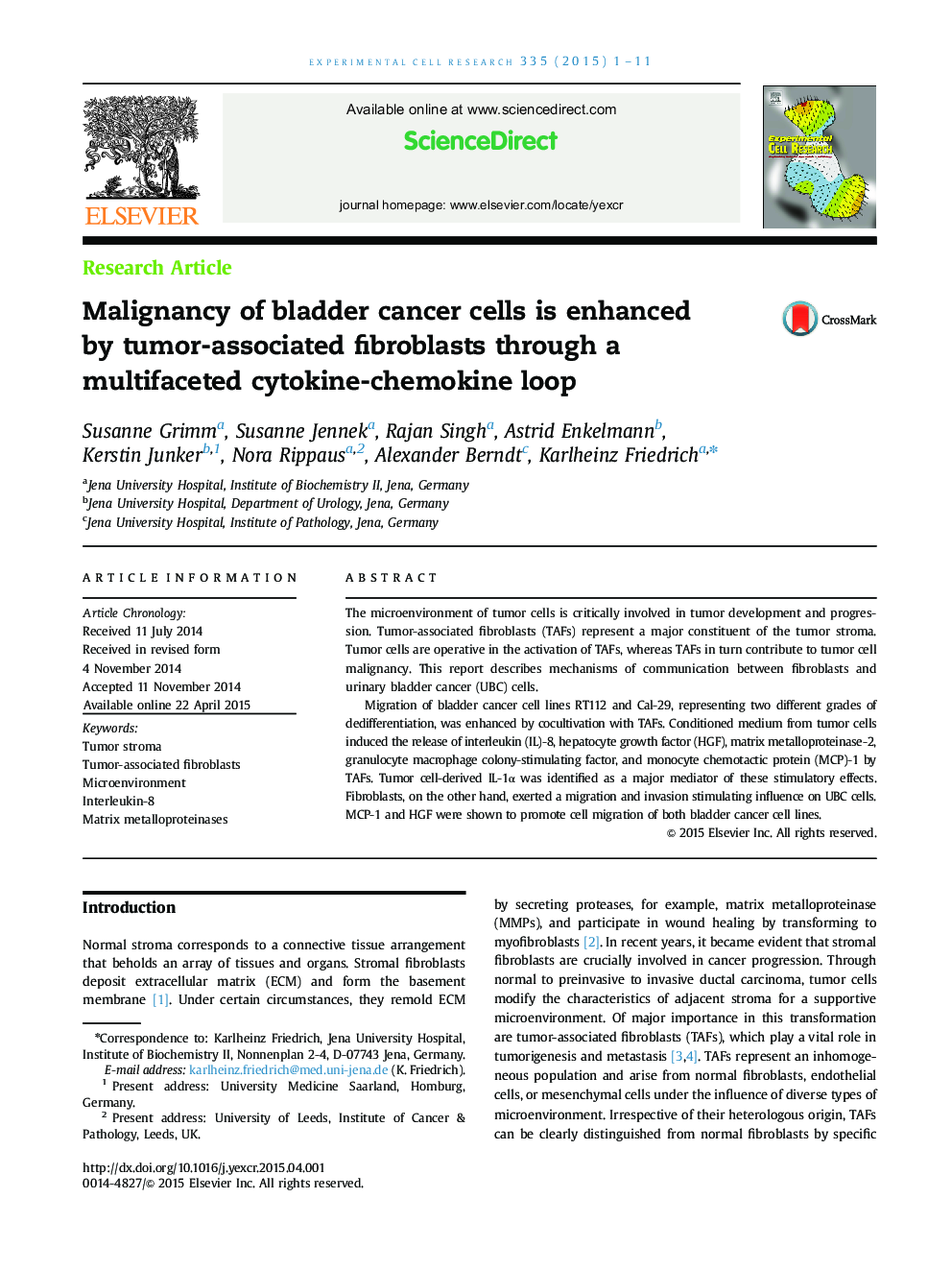| کد مقاله | کد نشریه | سال انتشار | مقاله انگلیسی | نسخه تمام متن |
|---|---|---|---|---|
| 2130185 | 1086536 | 2015 | 11 صفحه PDF | دانلود رایگان |
The microenvironment of tumor cells is critically involved in tumor development and progression. Tumor-associated fibroblasts (TAFs) represent a major constituent of the tumor stroma. Tumor cells are operative in the activation of TAFs, whereas TAFs in turn contribute to tumor cell malignancy. This report describes mechanisms of communication between fibroblasts and urinary bladder cancer (UBC) cells.Migration of bladder cancer cell lines RT112 and Cal-29, representing two different grades of dedifferentiation, was enhanced by cocultivation with TAFs. Conditioned medium from tumor cells induced the release of interleukin (IL)-8, hepatocyte growth factor (HGF), matrix metalloproteinase-2, granulocyte macrophage colony-stimulating factor, and monocyte chemotactic protein (MCP)-1 by TAFs. Tumor cell-derived IL-1α was identified as a major mediator of these stimulatory effects. Fibroblasts, on the other hand, exerted a migration and invasion stimulating influence on UBC cells. MCP-1 and HGF were shown to promote cell migration of both bladder cancer cell lines.
Journal: Experimental Cell Research - Volume 335, Issue 1, 1 July 2015, Pages 1–11
